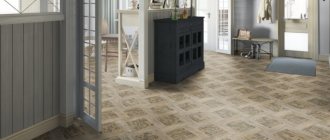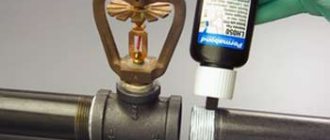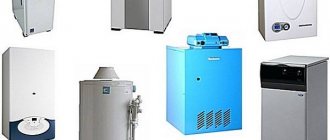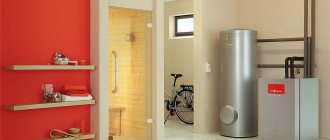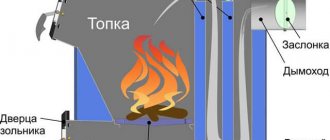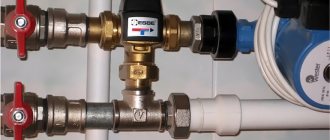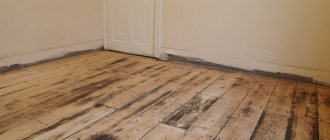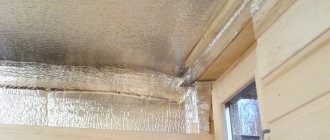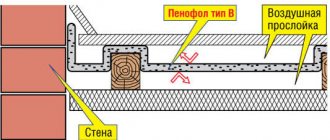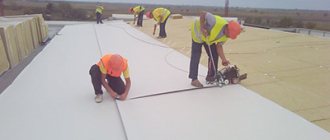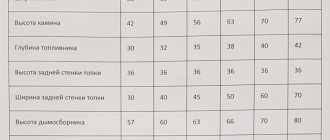Vapor barrier tape
The installation of waterproofing must be treated as responsibly as the choice of roofing coverings. Vapor barrier tape is a special construction tape used to seal the connecting seams of vapor barrier films. If unsuitable or low-quality adhesive tape is used for these purposes, it peels off from the film, the seams lose their tightness, and moisture freely enters the insulation. As a result, the thermal insulation properties of housing construction are reduced or lost.
Which tape is best for vapor barrier?
Vapor barrier tape is selected according to needs, materials and desired results. What to look for when purchasing:
- lifetime;
- degree of adhesion to various materials;
- resistance to heat;
- property to absorb water;
- resistance to ultraviolet radiation.
It is better to make a choice in favor of proven brands:
- Izospan is a durable butyl rubber tape with a metallized base.
- Delta is a universal single-sided tape made in Germany. Delta tape is used for bases made of metal, wood, and hard plastic.
- Tyvek - universal tapes of single-sided and double-sided types. Used in extreme humidity conditions.
- TechnoNIKOL is a double-sided tape with a polypropylene base. Easy to use, provides reliable protection from moisture, and has good adhesion to most building materials.
Types of adhesive tapes for connecting vapor barrier films
All special tapes used to connect vapor barrier films differ in their structure and differ in the materials from which they are made. Structurally, they are single- and double-sided. The former are used for attaching strips of vapor barrier film together “joint to joint”, and the latter are used for attaching vapor barrier “overlapping”.
You can buy vapor barrier tape from various materials in the following types:
- Aluminum tape is a layered building material consisting of protective paper, aluminum tape (20-40 microns thick) and an adhesive layer. This type of tape with a tape width of 5-10 cm holds vapor barrier films together well, but it cannot be used with all of their varieties.
- Reinforced tape with aluminum differs from standard tape with an aluminum layer in increased strength due to the placement of a reinforcing layer inside it. Width 5-10 cm.
- Polypropylene is the cheapest and most accessible type of tape. You can buy vapor barrier tape at almost every hardware store. However, such tape has a serious drawback - insufficient reliability of the seam for attaching vapor barrier films. This tape is usually produced in a width of 5.0 cm and a thickness of 20-100 microns.
- TPL tape combines a polyethylene coating on the outside with a fabric base and a rubber adhesive layer. For example, such tape is rarely used to seal the seams of TechnoNIKOL vapor barriers. The thickness of the TPL tape is 200 microns, and the width is 5 cm.
- Butyl rubber tape has good adhesion and adheres perfectly to the vapor barrier surface. The width of this type of tape is 1.5-5.0 cm.
Brands of connecting tape
In order to choose the appropriate option, it is not enough to know only the technical characteristics or material of the adhesive tape. When you come to the store, you already need to know the brand of adhesive tape and tell it to the manager. Below we will look at some popular options; based on this information, you can decide exactly what is suitable for your needs.
Izospan SL
This tape is used simultaneously to seal the joints of hydro and vapor barriers. It was developed to seal the junctions of protective films to structures passing through the roofing pie of the attic floor. For example, it is used near chimneys, pipes and ventilation ducts or roof windows.
In addition, its working surface adheres perfectly to the walls and provides a reliable, hermetically sealed connection. Therefore, Izospan SL tape is used to treat the edges of the vapor barrier layer in the attic.
As for the technical characteristics, the most important information concerns the adhesion strength. If we talk about the connection with concrete, then the tensile strength is 0.1 MPa. But gluing to metal surfaces is not recommended, as adhesion is reduced tenfold.
The water absorption of the adhesive tape is equal to 0.2%, this is an excellent result when compared with roofing roofing felt, whose figure fluctuates within 2%. The operating temperature is between -60 and + 140 °C. This tape is suitable for use in any area.
TechnoNIKOL
This tape has working surfaces on both sides. The basis for the tape is polypropylene, but despite this, the material performs its functions perfectly. The length of one roll is 25 meters and the width is 3.8 cm. Thanks to the low cost, about $3 per piece, you can save on insulation without losing quality.
TechnoNIKOL adhesive tape is intended only for gluing vapor barrier rolls. It cannot be used when sealing film junctions with load-bearing structures. Most often it is used in residential private construction and industrial buildings.
Ondutis ML and BL
The mounting tape is designed for a service life of up to 15 years. Depending on the marking, the scope of application and the surfaces to which the tape can be glued differ. So, ML is a tape with an adhesive composition on both sides of the fabric base. The connecting compound is synthetic rubber, which is durable and reliable. Available in rolls 50 mm wide and 25 meters long. Designed for gluing vapor barrier in roofing pies and walls.
Ondutis BL also has two adhesive sides, one of which is covered with non-sticky paper. Used to seal joints between vapor barriers and hard surfaces. It is used to process connections with brick, concrete and wooden walls. In addition, it can be used as a fastening film to concrete walls.
Nicoband
A more expensive version of vapor barrier tape that has an aluminum base and two adhesive surfaces. The tape has several color options and is produced in rolls 10 meters long and 100 mm thick. The cost of this option is $11, which is explained by the scope of application.
Nicoband mounting tape is used to seal external seams. It is capable of firmly bonding insulating film to plaster, wood, metal, roofing and concrete. The manufacturer guarantees a tight connection for 10 years.
Mounting tapes Ondutis
Ondutis ML is a double-sided self-adhesive tape with a base made of fabric. The artificial rubber included in its composition ensures a stable and reliable connection for up to 15 years. This tape, 5 cm wide, is used during the installation of vapor barrier films on walls, ceilings and the roof itself; it is non-toxic and safe. Ondutis ML is used as a sealing tape (universal) when placing roofing and vapor barrier films on the fencing elements of buildings. Used for hermetically sealing (sealing) the seams of vapor barrier films.
Ondutis BL is a double-sided tape with a non-adhesive (anti-adhesive) paper base. This tape provides a stable air- and vapor-tight connection for up to fifteen years. Goes on sale in 2 rolls of 25 meters long (each). This BL tape is used for sealing various junctions with wood, concrete, brick and other roof penetrations (for example, pipes for various purposes, ventilation ducts), as well as for attaching films to walls made of brick or concrete.
Features of Ondutis mounting tapes
Ondutis BL is a self-adhesive double-sided tape on anti-adhesive paper. It is used for gluing vapor barrier films and sealing in places adjacent to roof passage elements (stove pipes, ventilation ducts, drain funnels, etc.) and to hard mating surfaces of concrete, wood, brick. Using this tape, a reliable vapor-tight connection is created with a service life of 15 years.
Ondutis ML is a self-adhesive double-sided fabric-based tape. The synthetic rubber included in the tape provides a strong, sealed connection for 15 years. This universal tape is used for gluing and sealing overlaps of vapor barrier films when installing vapor barriers on roofs, ceilings and walls. The material is non-toxic and harmless. Standard tape width is 50 mm.
Fixation of film vapor barrier building materials
The main tier of film vapor barrier is placed along the roofing eaves, observing the sagging required during installation relative to the rafters at a level of 1-2 cm.
It is important to correctly form the space between the rafters so that it does not exceed 1.20 m.
In addition, you need to ensure that the size of the air gap between the heat-insulating elements and the waterproofing film is about 4 cm.
The placement of the waterproofing layer is carried out horizontally - from the eaves overhang to the ridge beam, with a mandatory overlap of 10-15 cm. The maximum sagging value of the waterproofing film in relation to the rafters is strictly observed and should not exceed 2 cm.
The edges of the insulation are overlapped, and the seams must be sealed using appropriate tape, glue or tape.
The vapor barrier film is fixed over its entire surface with a stapler. Can be used for fastening nails with a galvanized surface.
It is important that the hardware used for fastening has a wide upper part that prevents damage to the insulation building material.
Each subsequent piece of film is placed overlapping the previous one by 20 cm, and this value changes depending on the roof slope.
House roof waterproofing scheme
Counter-lattice bars are placed on top of the waterproofing coating. The minimum cross-sectional value of the bars should be within 4 * 2.5 cm, with a placement interval of 10-15 cm. Then the installation of the sheathing structure is carried out.
How to choose and buy vapor barrier tape correctly
It is necessary to remember the basic rule - ordinary tape is not used for gluing the seams of vapor barrier films. Most of these insulating films have a rough outer surface, so the tape will come off almost immediately after gluing. When choosing the type of adhesive tape, you must consider its following characteristics:
- resistance to ultraviolet radiation and various natural phenomena;
- low moisture absorption rate (up to 0.2%);
- operating temperature range (ranging from −40 - +80С);
- adhesion resistance with certain types of building materials (metals, wood, concrete, films)
- long service life (up to 15 or more years).
Important: do not purchase adhesive tapes or tapes for gluing vapor barrier joints from unknown manufacturers. Such tapes can be unsafe for health and the environment (often even toxic).
In addition, these adhesive tapes cannot guarantee the required quality of gluing. Various types of butyl rubber construction tapes work best for vapor barriers.
Why do you need vapor barrier tape?
In construction work it is impossible to do without steam and waterproofing materials. Typically, a special film, polypropylene or foil membrane is used for this. It protects the structure from moisture, which leads to large-scale destruction. For example, condensation causes the development of fungus.
A special tape is used to secure the vapor barrier film. The purpose of the tape is to reliably glue the joints and seams of the protective film. In addition to minimizing the ingress of moisture, the material protects the room from the rapid release of heat from the apartment and the penetration of cold air inside.
Vapor barrier tape comes in several types and sizes. General material properties:
- High resistance to high and low temperatures in the range from –40 to +80 degrees.
- Moisture absorption is minimal - 0.2%.
- High level of adhesion to materials such as concrete, metal, wood, plastic.
- Long service life - up to 15 years on average.
Important: Regular office tape will not provide adequate protection against the penetration of steam and moisture. Over time, the material will begin to come off.
Installation of vapor barrier tape
To increase the reliability of the connection of vapor barrier sheets, the double gluing technique is used. First, the canvases are glued to each other “overlapping” using double-sided tape, and then the resulting seam is reinforced by gluing it one-sided.
Installation process of vapor barrier tape
Installation of vapor barrier tape consists of the following steps:
- Preparation of the bonded film surfaces - they need to be cleaned, dried and definitely degreased.
- The lower sheet of vapor barrier film is placed on the prepared base. The tape is glued around the perimeter of the entire canvas.
- The protective film is removed from the upper surface of the tape.
- The second fabric is placed “overlapping” on the first sheet, and the place where the seam is formed is clamped as tightly as possible.
- Then the edges are glued with tape.
Important: to ensure the best quality of connection, seams must be sealed at optimal temperatures and humidity.
Installation features
To increase the reliability of installation, they resort to the double gluing method. This method involves overlapping fastening using double-sided tape, and then gluing the connection on one side. Installation steps:
- the film surface undergoes thorough preparation: cleaning, drying, degreasing;
- the base is also prepared, then the lower part of the vapor barrier film is applied;
- adhesive double-sided tape is glued along all edges of the film, the protective layer is removed;
- the second canvas overlaps the first;
- the seam is pressed tightly for maximum fixation;
- the resulting connection is glued with one-sided material, while ensuring uniform distribution of the tape over the two canvases.
Tape for vapor barrier: types, selection and application
In order to create reliable protection for the roof against the penetration of vapors and water, it is not enough to simply install an insulating layer. When installing it, it is important to follow all recommendations and use special fasteners. As a rule, builders use staples or galvanized nails as fasteners. But the insulation manufacturer does not recommend using this material without addition; in this case, vapor barrier tape should also be used.
How to choose the right vapor barrier tape
To fasten the parts of the vapor barrier film together, use special tape. What it is like and how to choose the right one, we will consider further.
Stationery tape is not suitable for such work, because it has a rough outer side, which makes gluing impossible, because the tape will fall off within a day. When choosing tape for vapor barrier, pay attention to several points:
- resistance to ultraviolet radiation and weather conditions;
- moisture absorption should be minimal (up to 0.2%);
- maintaining temperature -40…+80 °С;
- can last at least 15 years.
When choosing adhesive tape in a store, focus on its quality, because it can release toxic substances and stick poorly.
Let's look at the types of tape:
- Aluminum tape. Consists of an adhesive layer, protective paper and aluminum tape. Can only be used for certain films, has a width of up to 10 cm.
- Reinforced aluminum tape. It has greater strength than aluminum tape and has a reinforcing layer. The width is the same as in the previous one.
- Polypropylene tape. It is low cost and easy to find in stores. Low reliability when gluing films. Width – up to 5 cm.
- TPL tape. It has a double-sided layer, which consists of a fabric base and a rubber base, and glue between them. Rarely used when sealing joints. Width – up to 5 cm.
- Butyl rubber tape. Good adhesion, glues vapor barrier well. Width – from 1.5 to 5 cm.
Types of adhesive layers
All types of special tapes that are used to connect insulating sheets differ in the structure and composition of the components from which they are made. From a constructive point of view, the series is divided into two types:
- unilateral;
- double-sided tape.
The first option is used for joining films using the butt method, the second - if it is necessary to attach roof waterproofing with an overlap.
Today, the construction market offers many types of vapor barrier tapes; the most popular modifications are the following:
- Aluminum special tape is a three-layer product that consists of paper covering an adhesive layer, aluminum and an adhesive coating. The product can only be purchased with a width of 5-10 cm. It carefully fastens the vapor barrier film and guarantees complete sealing, but it is important to consider that this option is not suitable for all types of waterproofing.
Izospan vapor barrier tape on a metallized base - has a high wear resistance and tensile strength
- Aluminum tape for sizing with additional reinforcement. The main distinguishing feature from the traditional type is increased strength. This factor is achieved due to the presence of a reinforcing layer. A modification with a width of 50-100 mm is available.
- Polypropylene for gluing membranes is a budget, most affordable option, since it is sold in any construction supermarket. Disadvantages include unreliable fixation. Standard width parameters are 5 cm, thickness – 20-100 microns.
- TPL is used for textile-based waterproofing. Also, an important role is played by the adhesive layer, which should be made exclusively of a rubber composition. For example, this product is used extremely rarely for TechnoNIKOL vapor barriers. The maximum thickness of the building material is 200 microns, width is 5 cm.
Varieties
Vapor barrier tape is classified according to its structure:
- Single-sided adhesive base. Applicable when joining the insulating layer with an overlap.
- Double-sided adhesive base. Suitable for butt jointing of the insulating layer.
Difference in raw materials:
- Made from aluminum, it also includes a paper layer and glue. It is a universal type, as it is applicable to all types of films. Available in widths of 50 – 100 mm.
- The strip is reinforced aluminum. Has excellent strength.
- The polypropylene option is budget-friendly. The connection quality will be appropriate.
- The butyl rubber tape option is the most reliable, as it has increased adhesion to film coatings. But the weight of the product is significantly higher than aluminum strip options. Width 10 – 15 mm. According to reviews, the most reliable, high-quality option.
- TPL tape is made from a textile base, the outer side is made of polyethylene, and rubber glue is used as an adhesive layer. Rarely found in use.
It is also worth noting that there is a division of the material into winter and summer options. The first involves fastening at low temperatures. Summer ones are applicable under normal conditions.
Vapor barrier
The insulation between the wall and the window consists of three layers:
- Outer. Its function is waterproofing, which means protecting the room from any weather conditions - snow and rain.
- The load-bearing insulation layer is located in the middle of the joint and is responsible for heat and sound insulation. Protection from frost is provided by a porous material resembling polyurethane foam. The waterproofing agent prevents moisture from getting inside.
- The inner layer is also considered thermal insulation. Here the mechanism of heat conservation is different. This layer does not allow heat to escape from the inside, unlike the outer layer, which protects the premises from cold air flows from the street.
Window thermal insulation layers
Window vapor barrier refers to the inner layer, but is not always included in the insulation system. Single-sided self-adhesive vapor barrier tape or double-sided vapor barrier tape is additional protection. The need to use tape increases if the window is installed in a room with a high moisture content: kitchen, sauna, bathhouse.
Installing vapor barrier tapes is no more difficult than installing other types of seam insulation. However, a vapor barrier can help avoid subsequent serious problems with the entire window protection system. When installing a vapor barrier, in some cases you may need a couple of additional accessories, for example, vapor barrier tape. This is worth considering.
How to properly apply vapor barrier tape
Prepare the surface to be bonded: clean, degrease and dry. Lay vapor barrier material. Tape around the perimeter. Remove the film from the tape. Apply a second overlap to the first layer and press firmly. To ensure that the work is done better, do it with minimal humidity in the room and at a temperature no higher than 22 °C.
Is it necessary to tape the joints? It is better to glue them for a more reliable fixation of the material to retain moisture.
One of the best options for adhesive tape is TechnoNIKOL tape, which has a double-sided working surface and a protective anti-adhesive film. Connects overlaps of films and membranes.
Classification of vapor barrier tapes
Vapor barrier tapes are manufactured in two versions:
- tapes with one adhesive side;
- double-sided vapor barrier tapes.
Butyl vapor barrier tape for windows
The first type of tape is attached to the window frame of the window. The second allows you to choose the mounting location: both on the frame and in the opening.
In addition to differences in adhesive structure, tapes are divided into two types according to climatic design:
- for predominantly warm average annual weather, “summer” vapor barrier films are suitable;
- in the presence of sub-zero temperatures, “winter” tapes are used.
How to choose the right vapor barrier tape
We immediately exclude stationery tape from the list of materials to choose. In all its qualities, it is completely unsuitable for such work and will fall off very quickly. When choosing a self-adhesive tape for installing a vapor barrier, you should pay attention to the following qualities of the material:
- good adhesion to materials such as vapor barrier film, concrete, wood, metal, etc.;
- low moisture absorption (no more than 0.2%);
- operating temperature range - from –40 °C to 75 °C;
- resistance to ultraviolet radiation and atmospheric conditions;
- service life of at least 15 years.
It is recommended to purchase material only from well-known, reputable manufacturers. In this case, you are guaranteed the quality of the connection and the harmlessness of the material used for the life and health of the inhabitants of the house. Of the construction tapes, the most suitable for vapor barrier is butyl rubber tape.
Adhesive surface of vapor barrier tapes
All vapor barrier films are equipped with an adhesive strip. The absence of the need to apply glue yourself eliminates the possibility of poor-quality fastening of the tape, as well as moisture getting into the thermal insulation environment.
The material for the adhesive layer of the vapor barrier tape is butyl rubber or, in cases with high humidity, metal. Tapes containing rubber film are used for windows, balconies and doors in almost all types of premises. The basis of such a vapor barrier is non-woven fabric.
Types of vapor barrier tapes
The most common types of tapes, depending on the material:
- One of the most popular butyl rubber tapes is PSUL (pre-compressed sealing tapes), which are responsible for external vapor barrier, finishing of external joints and tight connection between frame and wall.
- GPL polyethylene tape is made from foam material. On one side it is treated with lamination. The strip contains metal inserts and an adhesive part along the entire length and width. Thanks to its well-thought-out composition, it is almost universal and is recommended for insulating all types of door and window frames.
- Vapor barrier tape for aircraft windows. Suitable for insulating joints if a subsequent dry method of finishing slopes is planned. Typically used on plastic or plasterboard elements. The connecting tape protects surfaces from condensation. The wide adhesive strip makes the installation of the vapor barrier strip simple and quick.
- Vapor barrier tape VM. Just like other types of tapes, it attaches perfectly to window and door frames. Installation is carried out in sequence from the frame. The strips of tape are attached overlapping in order to avoid possible heat leaks during operation of windows or doors.
Butyl rubber tape has a high specific gravity. PSUL tape weighs approximately 5 times more than tape made with reinforced aluminum foil with the same width. The differences between the types of tapes also lie in the surfaces for which they are usually used. The thick rubber tape can be firmly attached to the wall, and there is no need to use heavy insulating materials for gluing to slopes. For this case, lightweight foil-reinforced strips are preferred.
Aluminum foil tape
GPL are vapor-waterproofing tapes that perform moisture protection as the main task. These tapes form the outer layer of insulation with an additional vapor barrier function . Self-adhesive vapor barrier tape is made of polyethylene foam.
Polyethylene foam has a porous structure, has good thermal insulation properties and almost zero hygroscopicity (does not absorb moisture). The presence of this material in the tape makes it elastic and provides high-quality sealing with any surface, including uneven ones.
Construction tape for vapor barrier
Vapor barrier tape is a connecting tape that will help ensure that coatings or areas where certain parts are combined are impenetrable to vapor or water. If you use ordinary tape, it will quickly peel off, and moisture will freely enter the thermal insulation layer.
Vapor barrier tape is divided into several types:
- Connection tape made of aluminum. The thickness averages thirty micrometers. This type copes with the task perfectly, but it is not suitable for all types of vapor barrier. The width of the aluminum tape is approximately ten centimeters;
- Reinforced tape. This construction connecting tape differs from the previous one in its greater strength, the width is approximately the same;
- Polypropylene construction tape. The main advantage of the material is its low cost on the construction market. However, this tape is rarely used when gluing vapor barrier sheets, since it has low strength;
- Universal reinforced adhesive tape. The basis of this type of tape is fabric. And the base of the glue is rubber. It is used very rarely to ensure vapor tightness. The width of the tape is five centimeters;
- Butyl rubber joint tape. The type has excellent adhesion to the surface and adheres well to the vapor barrier layer.
When purchasing special construction tape, you should consider the following characteristics:
- this material must be highly resistant to ultraviolet rays;
- the tape should practically not absorb moisture;
- ability to withstand temperatures up to 90 degrees Celsius;
- construction connecting tape must have excellent adhesion to wooden and metal surfaces (adhesion);
- operational service life is fifteen years.
The vapor barrier sheet should be glued first with double-sided tape, and then the second layer with one-sided tape.
When working with special tape, you need to follow a certain algorithm of actions:
- first you need to clean the surface from dust and other dirt, and then dry it;
- the lowest layer of vapor barrier is installed on the coating; it is sealed along the entire length and width with a special connecting tape;
- Next, we get rid of the film from the top of the tape;
- at the end, the second layer is installed, it must be pressed tightly and sealed.
